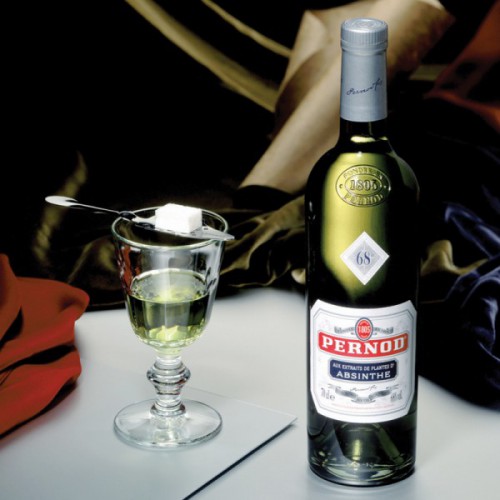 1792 — Swiss Dr. Pierre Ordinaire is said to have invented the first absinthe — a wormwood liqueur made with chamomile, melissa and anise.
1792 — Swiss Dr. Pierre Ordinaire is said to have invented the first absinthe — a wormwood liqueur made with chamomile, melissa and anise.
1797 — Henri-Louis Pernod gets his hands on Dr Ordinaire’s absinthe recipe by way of a lucrative business deal. Pernod and his friend Daniel Henri Dubied promptly opened the first absinthe distillery, located in the beautiful Couvet, in Switzerland.
1805 — Henri-Louis Pernod opens a new, larger absinthe distillery in Pontarlier, France. Shortly after this, other copy-cat absinthe brands were created, including Oxygenee, Terminus, Pernot, Armand Guy and others.
1830 —Louis Philippe, the “Citizen King”, ascends to the French throne. It was under the reign of Louis Philippe that absinthe became a common drink in its own right. Prior to this it was really only drunk as a cordial, and used as a flavour for other beverages.
1840 — French soldiers fighting in Algeria in the 1840s drank absinthe as a preventative tonic against malaria and other diseases. It didn’t take long for the soldiers to get used to the distinctive taste of absinthe and start to drink it in quantities that exceeded its ‘tonic’ status. This sparked the first big surge in absinthe’s popularity in France.
1850 — Henri-Louis Pernod dies. When his sons Louis-Alfred and Fritz took over in 1850 the factory was producing over 20,000 litres of absinthe a day.
1859 — Manet paints “The Absinthe Drinker”. He also meets Charles Baudelaire, who was a big fan of absinthe. Baudelaire, a well-known poet and art critic, had a great influence on Manet’s life, as he promoted the revival of graphic art and introduced him to the leading artists of the era’s etching movement.
1876 — Degas paints “L’Absinthe,” one of Degas’s most celebrated works, is also one of his most controversial. It was exhibited in London in 1893 and raised many questions: was it acceptable to paint poverty?
1878 — 8 million litres of Absinthe were imported into the United States this year.
1887 — Van Gogh paints “Still Life with Absinthe“. Van Gogh was clearly fixated by what has been called the “cocaine of the nineteenth century”.
1888 — After an evening drinking absinthe, and a fierce argument with his artist housemate Gauguin, Vincent Van Gogh cut off the lobe of his left ear.
1900 — On November 30th Oscar Wilde dies penniless in a cheap Parisian hotel. Oscar Wilde is one of the most famous absinthe drinkers.
1901 — Picasso paints “The Absinthe Drinker” and “Woman Drinking Absinthe.”
1905-1910 — Absinthe banned in Belgium, Switzerland and Holland.
1910 — French production of absinthe reaches 36 million litres annually.
1913 — Charles Foley’s one-act play Absinthe is performed for the first time at the Grand Guignol in Paris.
1915 — Absinthe is officially banned in France.
1922 — The French government passed a bill allowing the sale of imitation (wormwood-free) Absinthe.
1988 — The definitive Absinthe book, “Absinthe History In A Bottle” is written by absinthe connoisseur, Barnaby Conrad III and published by Chronicle Books of San Francisco, USA.
2001 — Absinthe is re-legalized in France.


Some significant events that weren’t included are: the forensic analysis performed by T.A. Breaux on pre-ban samples, publication of these findings- leading to changes in law, and dates for the US ban (1912) and relegalization (2007).
As fine a product as was Pernod Fils’ 1901 pre-ban absinthe, it should also be noted that Pernod of today does not craft an artisinal product. Pernod’s absinthe is not naturally colored and flavored by botanicals, rather, artificial color and flavoring is added.
Great insight, it’s good to know we’re not the only absinthe lovers out there!
Cheers,
DIA